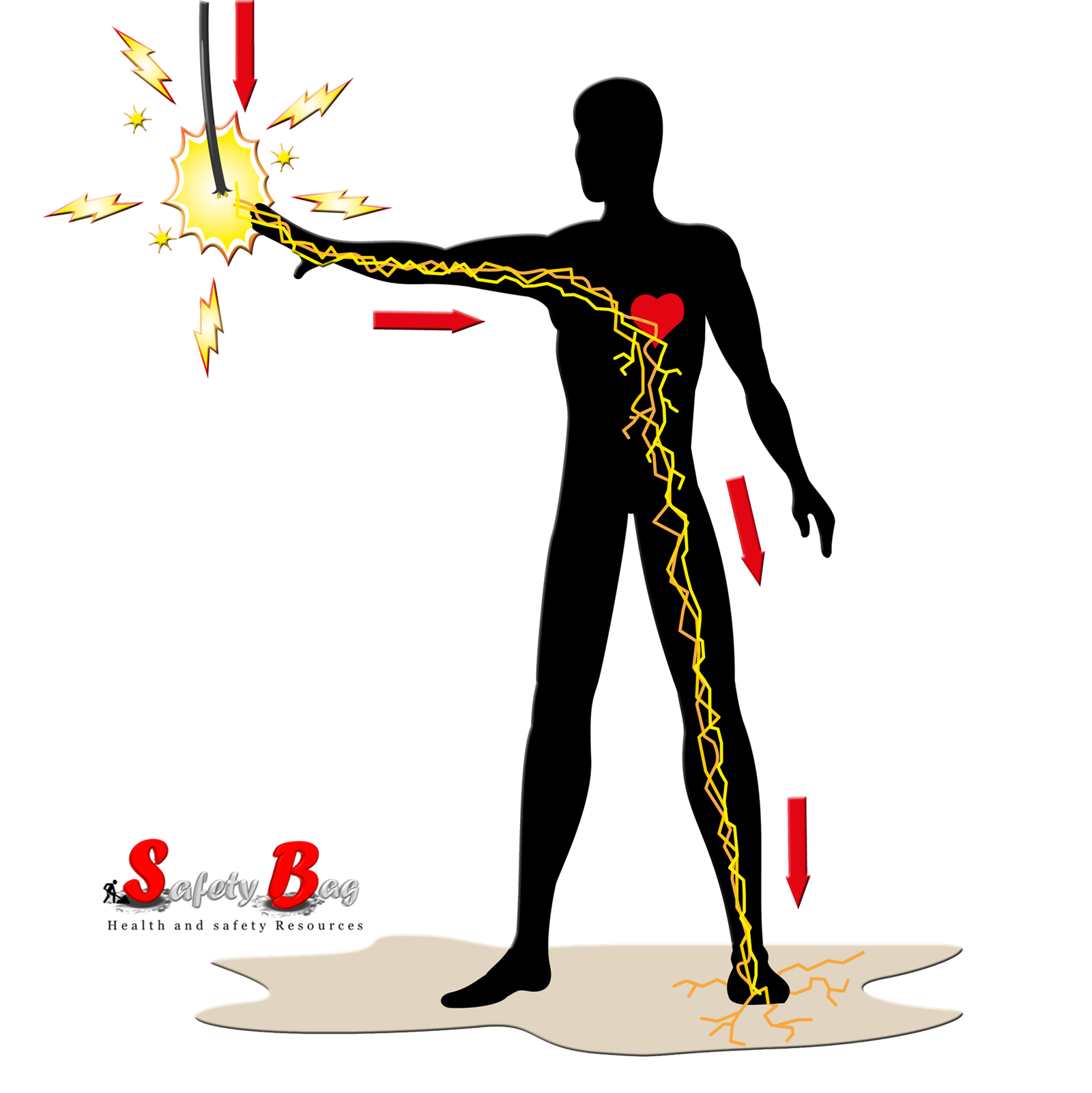Electric current passing through the body, particularly alternating current at power frequencies of 50 Hz and 60 Hz, may disrupt the nervous system, causing muscular reaction and the painful sensation of electric shock. The most common reaction is to be thrown off the conductor as a result of the muscular contraction.
However, in a small number of instances, the consequence is death from cardiac arrest, ventricular fibrillation (where the heart muscle beats in a spasmodic and irregular fashion), or respiratory arrest. ( Also read: Types of electrical injuries )
Note: The psychological effects are largely determined by the magnitude and frequency of the current, the waveform ( for example, continuous sine wave, half-wave rectified sine wave, or pulsed waveform ) , its duration, and the path it takes through the body.
An authoritative guide on the topic is published in IEC 60479. The following text concentrates on the most common situation of a shock from a continuous power frequency ac waveform.
( Also : Booklet: Electrical Safety Worksite Do’s and Don’t )
The magnitude of the current is the applied voltage divided by the impedance of the body. The overall circuit impedance will comprise the body of the casualty and the other components in the shock circuit, including that of the power source and the interconnecting cables. For this reason, the voltage applied to the body, which is commonly known as the touch voltage, will often be lower than the source voltage.
The impedance of the body is determined by the magnitude of the touch voltage (there is an inverse relationship between impedance and voltage) and other factors, such as the wetness of the skin, the cross-sectional area of contact with the conductors, and whether or not the skin is broken or penetrated by the conductors.
As a general rule of thumb, at an applied voltage of 230 V at 50 Hz, the total body impedance for a hand-to-feet path will be in the range of 1000 Ω to 2500 Ω for most of the population, falling to around 750 Ω at voltages in excess of about 1000 V.

The path that the current takes through the body has a significant effect on the impedance. For example, the impedance for a hand-to-chest path is in the order of 50 percent of the impedance for a hand-to-foot path. Moreover, the current’s path through the body is a significant determinant of the effect on the heart.
Table 1 summarizes the physiological effects of current passing through the body.
Note: The effects relate to a hand-to-hand shock exceeding 1 s for a person in good health. If the duration were less than 1 s, greater currents could be tolerated without such adverse reactions.
Electric shock accidents are most common on low-voltage systems and are usually subdivided into two categories of direct contact and indirect contact shocks. A direct contact shock occurs when conductors that are meant to be live, such as bare wires or terminals, are touched. An indirect contact shock occurs when an exposed conductive part that has become live under fault conditions is touched, as depicted in Fig.1
( Read more: Low-Voltage Electrical Safety )
Examples of an exposed conductive part are the metal casing of a washing machine and the metal casing of switchgear. This type of accident, which requires two faults to occur (the loss of the earth connection followed by a phase-to-earth fault), is quite common.
Physiological Effects
Table 1 The effect of passing alternating current (50 Hz) through the body from hand-to-hand

First Aid with Emergency Defibrillator

When providing first aid to an electric shock casualty, the first action should be to remove the cause by switching off the supply or otherwise breaking contact between the casualty and the live conductor. Cardiopulmonary resuscitation may be required. If the casualty is suffering from ventricular fibrillation, the only effective way to restore normal heart rhythm is by the use of a defibrillator. ( Also Read: Facts about Automated External Defibrillator )
Note: If the casualty is suffering from ventricular fibrillation, the only effective way to restore normal heart rhythm is by the use of a defibrillator.
Where a defibrillator is not immediately available, the first aider should carry out cardiopulmonary resuscitation until either the casualty recovers or professional assistance arrives.
Kow more about Electric shock survival




